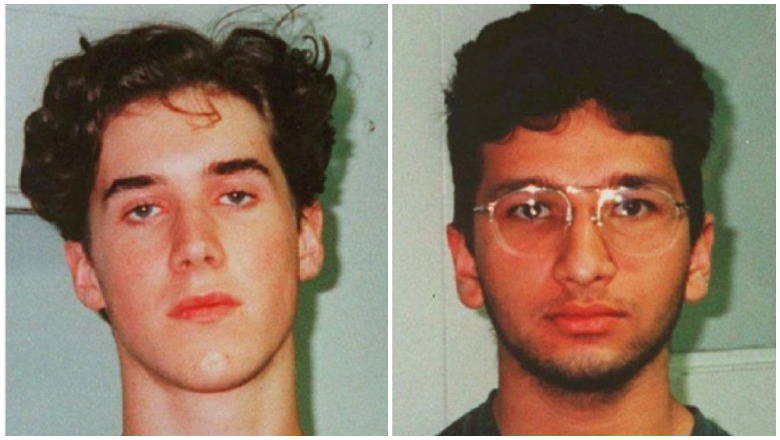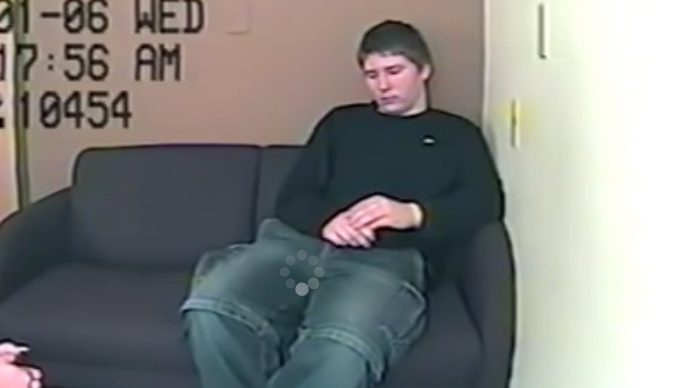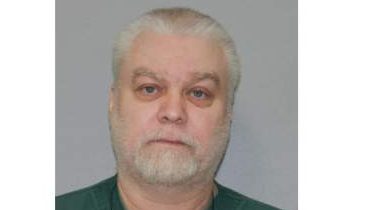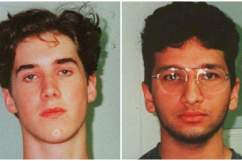
Mugshots Sebastian Burns {l} and Atif Rafay {r}.
The Confession Tapes is Netflix’s latest foray into the realm of true crime and police procedural, and, specifically, into the fallibility of confessions, especially involving teenagers who are manipulated by law enforcement into confessing to crimes for which there is no, or minimal, forensic evidence pointing at them.
First, with great fanfare, came Making a Murderer, which focused on the story of a once wrongfully convicted Wisconsin man, Steven Avery, and his teenage nephew, Brendan Dassey. Part of what drove the outrage among viewers of that Netflix series: The videotaped confessions between Wisconsin law enforcement officials and Dassey, which formed the core of the case against him (the evidence against the older Avery was more complex and also involved DNA and blood evidence. In contrast, no forensic evidence connected Dassey to the murder of photographer Teresa Halbach, whose bone fragments were discovered in a burn pit behind Avery’s trailer.) An appeals court panel later upheld a lower court’s decision to overturn Dassey’s conviction, but the court has agreed to rehear arguments in the case.

A screenshot from an interrogation of Brendan Dassey. YouTube
Enter The Confession Tapes, which has some obvious similarities to Making a Murderer and some differences (for starters, although compelling, it is not as addicting.)
Warning: Plot spoilers ahead.
The Confession Tapes differs from Making a Murderer in some key ways (this article is focusing only on episodes 1 and 2 of the first season of the former). Namely, it’s a seven-part series that follows multiple cases. The series starts with two episodes about the murder case of Sebastian Burns and Atif Rafay, who were convicted in the 1994 Washington State murders of Rafay’s father, mother, and sister, who were found beaten to death with a bat in the family’s home. However, just when the audience is fully engaged in the Burns and Rafay story (and it’s a very compelling one, with serious questions about their guilt), the series switches cases altogether. One couldn’t help but think that Burns and Rafay could have carried all of season 1 of The Confession Tapes themselves.
You can find a slew of documents and details on the Burns and Rafay case here.
Making a Murderer stood out because of the rare and extremely personal footage that the filmmakers obtained during the old court proceedings in Manitowoc, Wisconsin (even most people in Wisconsin had no idea it existed for years), letting viewers feel like they were experiencing the trial through the family members’ viewpoint, turning Avery and his junkyard-owning family into Internet celebrities.The barren landscape and social exclusionary nature of a tight-knit rural community was as much a character in the streaming series as the outcast Averys were. Making a Murderer wasn’t just about police procedures (although it did contain unproven accusations of police evidence planting); it was also a parable about socio-economic class and the criminal justice system (although Avery wasn’t entirely without means due to a civil settlement from his earlier wrongful conviction in a rape case for which everyone agrees he was wrongfully incarcerated; this twist was highly unusual, a case that was years before Halbach’s murder.)
The story of Burns and Rafay doesn’t carry any of these odd overlays, and we never get much of a sense of the landscape or community within which they operated; the defendants and their families are interviewed in a more traditional sense in The Confession Tapes that feels less like an intimate look into their lives and personalities and more like something we’ve seen before: Old news footage interspersed with standard interviews. As with Making a Murderer, the viewer never feels like he or she really gets to know the victims, who appear fleetingly, although Atif’s emotional and heartfelt tribute to his murdered parents at sentencing – which even moves the cynical judge – is easily the most moving moment in the episodes.
We never really feel like we know the defendants and their families in the Rafay and Burns case, although by the end of episode two, it’s easy to care (the men’s lives in prison would be interesting to learn more about; it’s jarring to fleetingly see how much they’ve aged). In Making a Murderer, viewers were transported into the Avery family’s kitchens and living rooms.
However, in both cases, concerted and determined efforts have been made to help the defendants by groups and people convinced of their innocence. In both cases, the shows clearly attempt to take the defendants’ side, Making a Murderer more glaringly, and the stated goal seems, in part in one and entirely in the other, to highlight how easily confessions can be, simply, wrong. This is a continuation of the true-crime serials that are excavating the defense perspective (think Serial), the counter-point to cable news conviction-by-media of people in cases involving people like Jon Benet’s parents and Gary Condit (not to mention OJ).
Burns and Rafay were both only 18 when they went to a movie and returned home to find Rafay’s family slain. As with Dassey, there was little forensic evidence tying them to the crime (other than some hairs in a shower drain that might have been there previously.) Blood at the scene didn’t match them. In both instances, it’s hard to believe that the defendants, if guilty, wouldn’t have left some forensic evidence behind at the crime scenes, although, in Avery’s case, it’s possible the prosecution didn’t pinpoint the right place where the photographer died (Halbach was missing for days before her burned body fragments were found; the Rafay bodies were located at the very bloody crime scene – inside their home. They were found by Atif and Sebastian.)
Unlike Dassey, though, whose IQ was an issue, Burns and Rafay come across as extremely articulate and well spoken and, in the case of Burns, to the judge at least, arrogant.
As with Dassey, both teens eventually confessed to the crimes but only after psychologically manipulative approaches from seasoned law enforcement officers; in the case of Burns and Rafay, this is a more dramatic and sneaky ploy; they had gone to Canada, and the Royal Canadian Mounted Police used a controversial technique known as “Mr. Big.”
Mr. Big is a procedure that is illegal in the U.S. and in other countries, although Burns and Rafay were convicted and sentenced to life terms in a United States court largely on the basis of the confessions obtained under it. In the technique, police go undercover to pose as gangsters or mobsters, and they ingratiate themselves with the target, eventually demanding to know the truth about past crimes in exchange for help dealing with them (the cops told Burns they would get rid of evidence described in a faked police report if he confessed to the homicides, the series shows). Critics – and there are many – say people are prone to false confession under this scenario because they confess to stay in the group or to gain some benefit from the so-called mob boss.

Steven Avery’s most recent photo from the Wisconsin prison system.
Burns and Rafay maintain their innocence, but received life prison terms without parole. You can read extensive documents in the case here.
Another element that Making a Murderer shares with The Confession Tapes episodes 1 and 2: Cops and prosecutors who double down and maintain nothing amiss happened, and alternative suspects who, the series argue, were not thoroughly enough explored (look for Making a Murderer 2, still under development, to head down the latter path with vigor now that Avery has a new attorney.)
In the case of Burns and Rafay, the series reveals that an undercover informant had pinned the murders on an Islamic extremist group called al-Fuqra. The motive was a stance that Rafay’s father had taken against positions during Islamic prayer, and the informant provided authorities with names and even described the murder weapon before police knew it was a bat, the series says. (In 2009, Fox News reported the group was creating jihadist training camps in the U.S.)
As with Making a Murderer, at least part 1, the series doesn’t spend any time actually tracking down new evidence relating to alternate suspects, focusing instead on flaws in police procedures and the prosecutors’ case weaknesses. One wishes they would. Al-Fuqra is dramatically dropped into the episodes but never followed up on. Surely, if law enforcement had the suspect names, something could be done with that by the defense? Or the filmmakers? How about new evidence testing? Because those things are not done, the series asks questions without providing new answers.
Furthermore, a friend of Burns and Rafay testified against them, a situation not present in the Avery and Dassey case, either. Making a Murderer also faced immediate and strenuous criticism from the prosecutor, who accused the filmmakers of slanting the evidence by leaving key evidence out, something they dispute.
The shows also both had sex accusations; Burns is accused of having sex with his lawyer, and in Making a Murderer, the prosecutor later ended up in a sexting scandal.
Still, the images of the slouching Burns on videotape confessing can’t help but bring Dassey back to mind.
According to Journalists’ Resource, “National Registry of Exonerations statistics suggest that young people in particular are more prone to admitting guilt for crimes they did not commit.”
“Thirty-eight percent of exonerations for crimes allegedly committed by youth under 18 in the last quarter century involved false confessions,” reporter Zusha Eilson is quoted as saying in the article, “compared with 11% for adults, according to a new database of 1,155 individuals who were wrongly convicted and later cleared of all charges.”
When it comes to binge watching potential though, The Confession Tapes doesn’t hold a candle to its predecessor.
